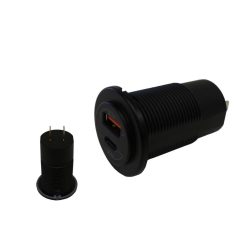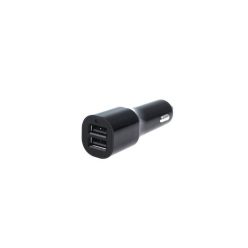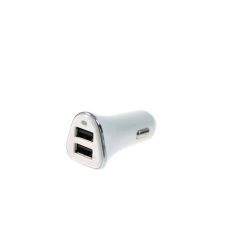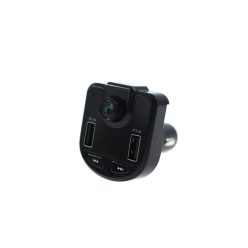Our Car USB Chargers run from 12/24 V and fit the cigarette lighter socket for dependable on-the-go charging. Choose from single or dual-port units with USB-A and USB-C (Type-C) outputs, including fast-charge standards like QC 3.0. With 2.4–4.8 A total output, they reliably power phones, sat-navs and accessories. Match the charger to your vehicle and device requirements for safe, stable use.
Net price: 11 €
Brief Summary & Key Benefits
Car USB Chargers provide safe, convenient power for mobile devices on the road. Running from 12/24 V, they plug into the cigarette lighter and deliver regulated 5 V over USB-A or USB-C (Type-C). Typical 2.4–4.8 A total output covers everyday phones, sat-navs and accessories, while QC 3.0 support enables faster charging where compatible. Small size, integrated over-current protection and easy operation make them an essential travel add-on.
Technical Basics
These adapters step down 12/24 V DC to a standard 5 V USB output using a switching DC-DC converter. Fast-charge requires protocol negotiation; with QC 3.0, the device selects higher voltage steps for improved power transfer. Output ports come as USB-A or USB-C (Type-C); the latter offers a reversible connector and higher current capability. A single port often supplies up to 2.4 A, while dual-port designs commonly reach 4.8 A combined.
Built-in protections—over-current, over-temperature and short-circuit—safeguard both the charger and your electronics. Many units include an indicator LED to show active charging. Always verify 12/24 V compatibility for trucks and vans. Frequent pitfalls include overloading a small adapter and using a poor-quality cable that causes voltage drop and slow charging.
Selection Criteria
Begin with required port count: choose dual-port if you power a phone and sat-nav simultaneously. Then pick the connector type—modern devices benefit from USB-C (Type-C), while legacy gadgets work fine with USB-A. Next, check total output current and supported standards (e.g., QC 3.0) so your handset can charge at its rated speed. A compact body and secure fit help prevent wobble in the socket.
If powering multiple devices, look for stable regulation and balanced load sharing between ports. Useful extras include a status LED, dust-cap bezzel-mount sockets and user-replaceable fuses. Consider the car’s interior layout: short, low-profile chargers won’t interfere with the gear lever or cupholders, while longer plugs can be easier to grip with gloves.
Installation & Maintenance
For plug-in models, inspect the lighter socket contacts and clean them before use. For panel-mount sockets, use proper-gauge wiring, add a fuse and observe polarity. Do not cover the charger to allow heat dissipation; excessive heat can trigger power throttling. Use quality, short USB cables to minimise losses and maintain stable charging.
Periodically check for connector wear or discolouration and wipe surfaces with a mild cleaner. If charging cuts out or a device overheats, try a different port and test with another cable. Replace the charger if issues persist—the safety of your devices and vehicle comes first.
FAQ
Q: Can I use the same charger in a truck?
A: Yes, provided it supports 12/24 V. Always confirm the input range before purchase.
Q: Why is charging slow?
A: Often due to a weak cable, unsupported fast-charge, or limited output. Choose the right protocol and a shorter lead.
Q: Is continuous use safe?
A: Quality models include over-current and thermal protection. Keep the charger ventilated during operation.
Q: Do two devices charge fast at once?
A: The total current is shared between ports; speed may drop when both are in use, as specified by the manufacturer.












